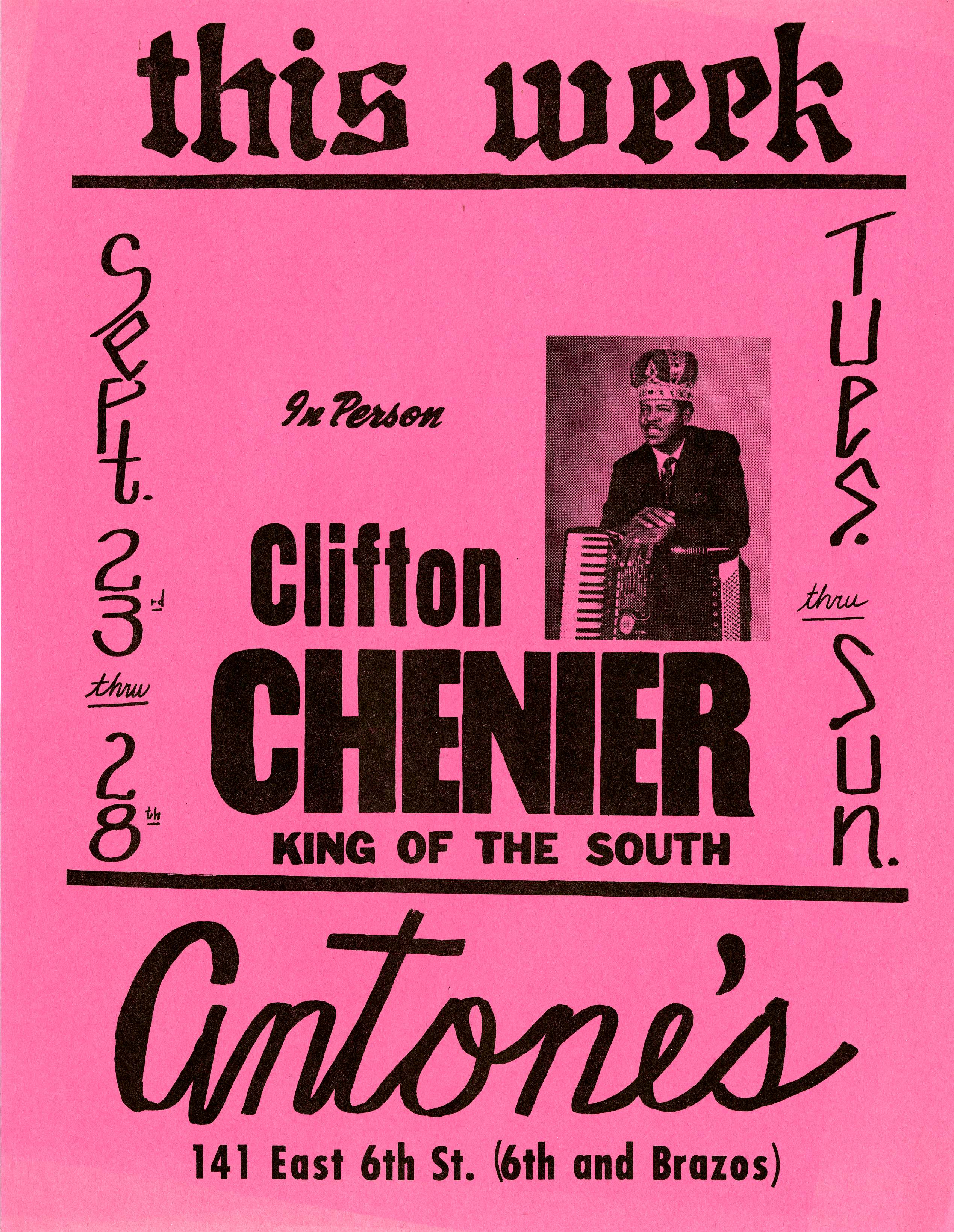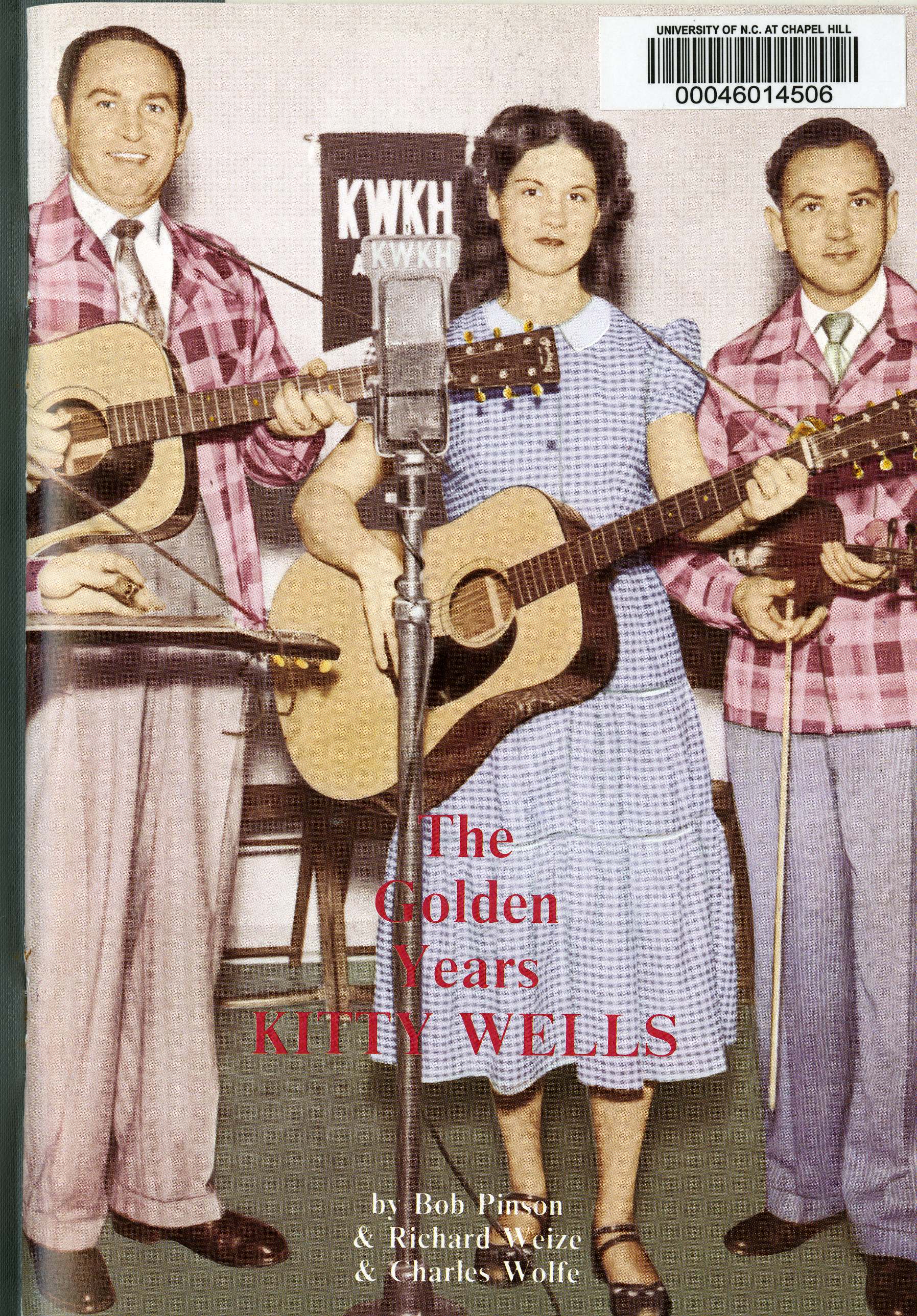
Fun research in the Southern Folklife Collection today. Always great to have an opportunity to dig through the SFC reference books. If you’d like to join us for some research, please visit Wilson Library and jump right in with one of these texts, like The golden years : Kitty Wells (pictured above).
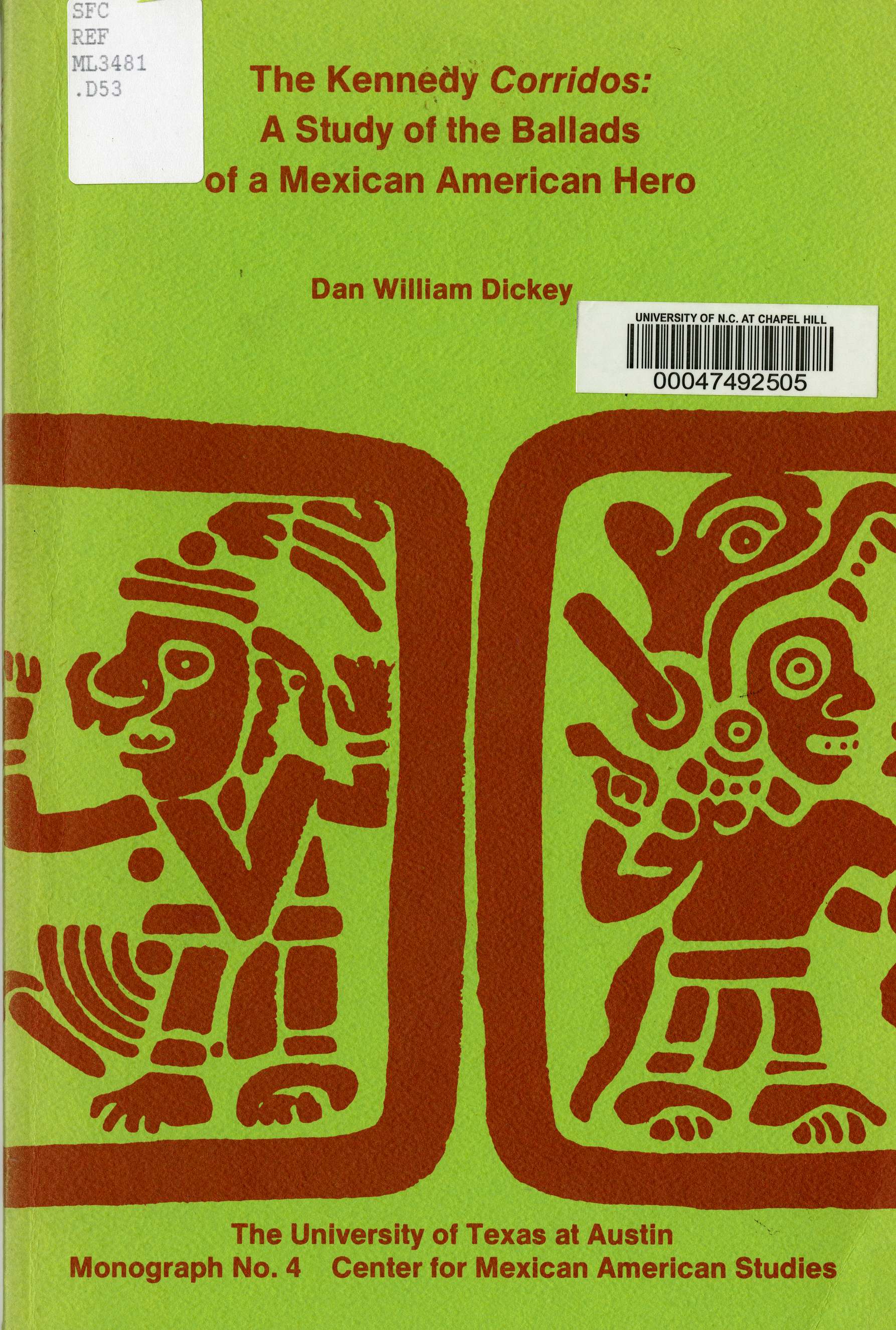 The Kennedy corridos : a study of the ballads of a Mexican American hero
The Kennedy corridos : a study of the ballads of a Mexican American hero
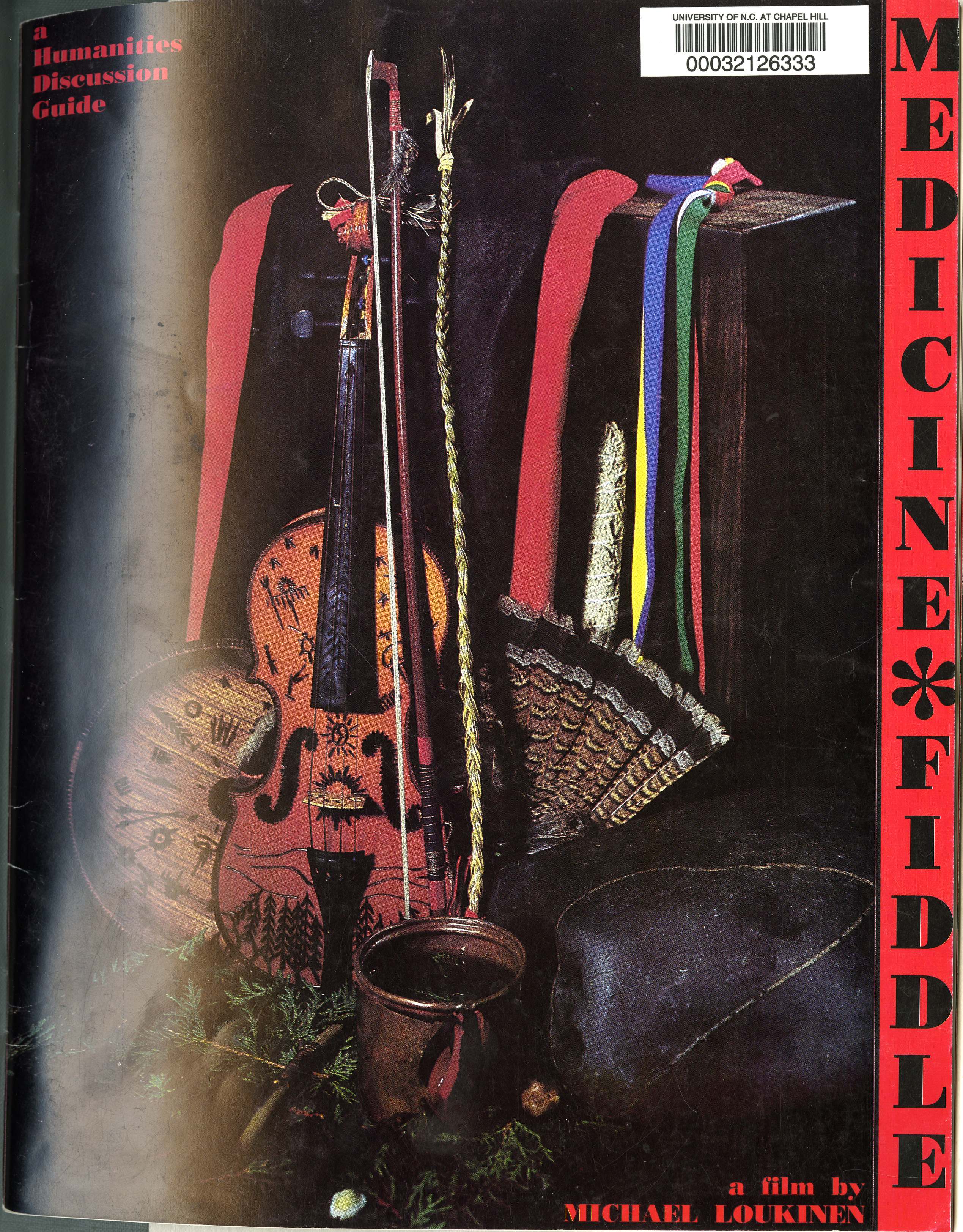
Medicine fiddle : a humanities discussion guide, a film by Michael Loukinen
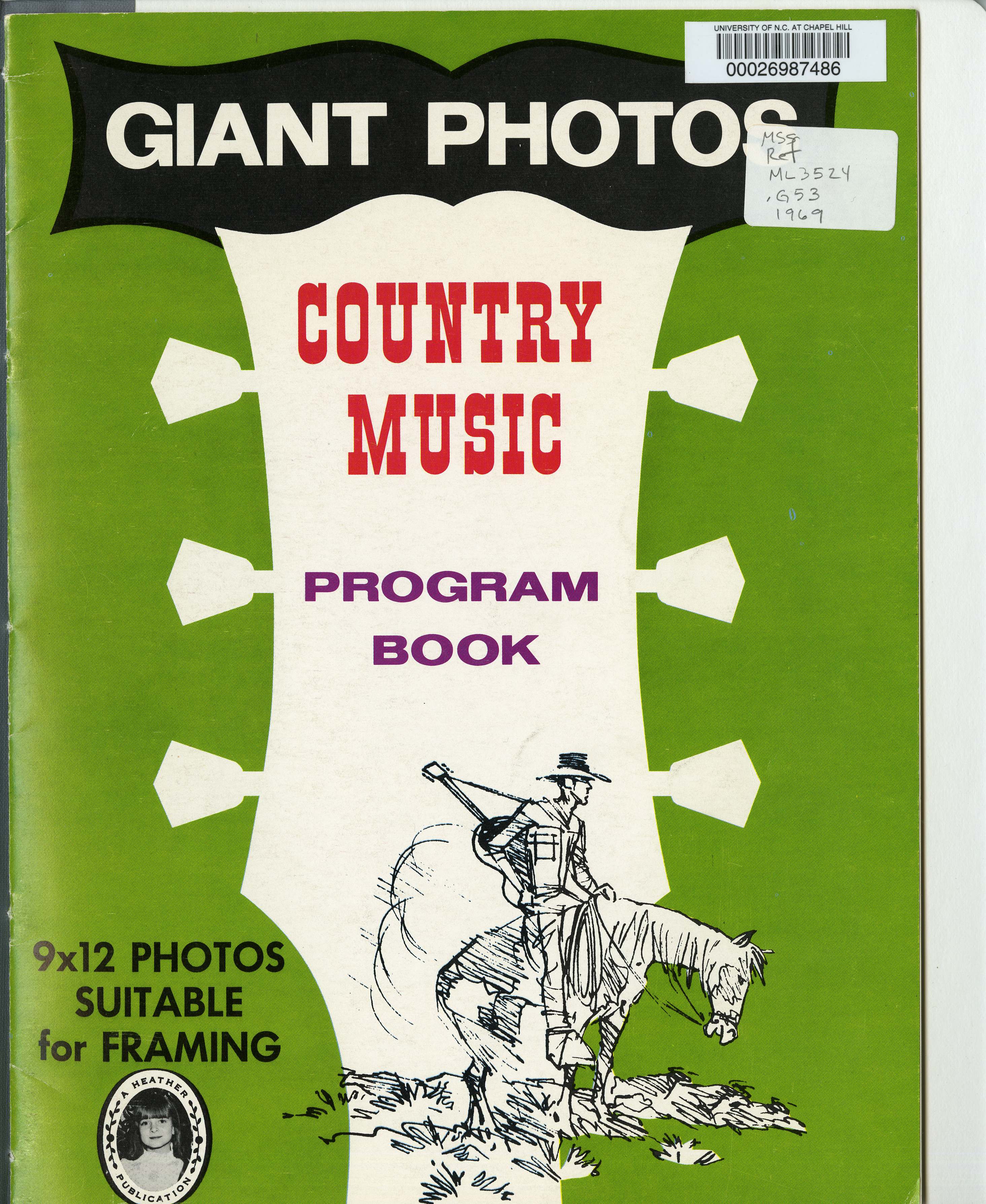
Giant photos Country Music program book

Country Music Spectacular Souvenir Album
Category: Southern Folklife Collection
Out of the stacks: digging in the SFC reference books
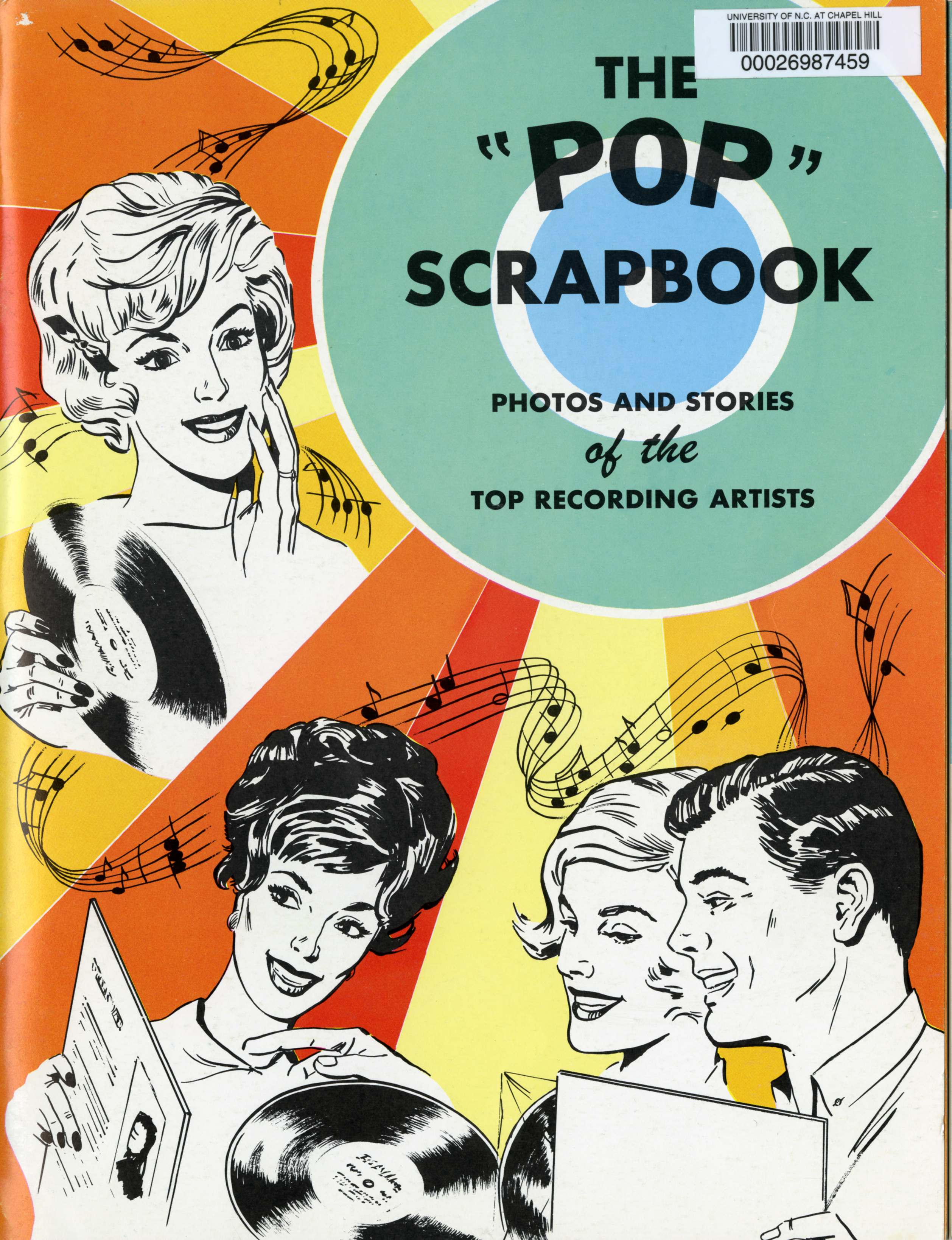 Fun research in the Southern Folklife Collection today. Always great to have an opportunity to dig through the SFC reference books. If you’d like to join us for some research, please visit Wilson Library and jump right in with one of these texts, like The “Pop” scrapbook : photos and stories of the top recording artists.
Fun research in the Southern Folklife Collection today. Always great to have an opportunity to dig through the SFC reference books. If you’d like to join us for some research, please visit Wilson Library and jump right in with one of these texts, like The “Pop” scrapbook : photos and stories of the top recording artists.
 Country music news, 1948-1969 ; Top records, 1944-1969
Country music news, 1948-1969 ; Top records, 1944-1969
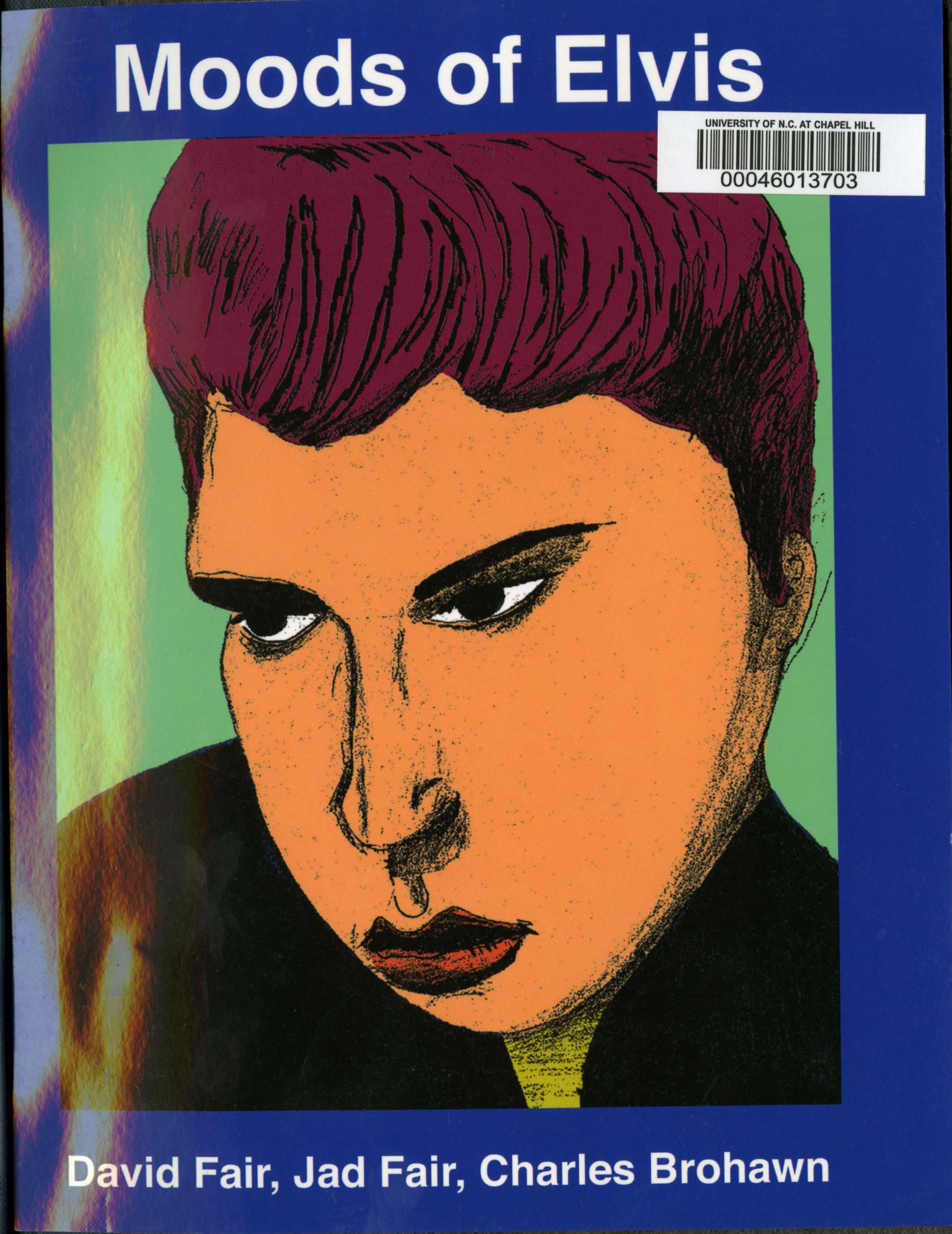 Moods of Elvis / David Fair, Chad Fair, James Brohawn.
Moods of Elvis / David Fair, Chad Fair, James Brohawn.  Memphis blues : birthplace of a music tradition William Bearden ; foreword by Knox Phillips
Memphis blues : birthplace of a music tradition William Bearden ; foreword by Knox Phillips
 R. Crumb’s heroes of blues, jazz, & country
R. Crumb’s heroes of blues, jazz, & country
Cataloger's Corner: Stuart Hamblen for President
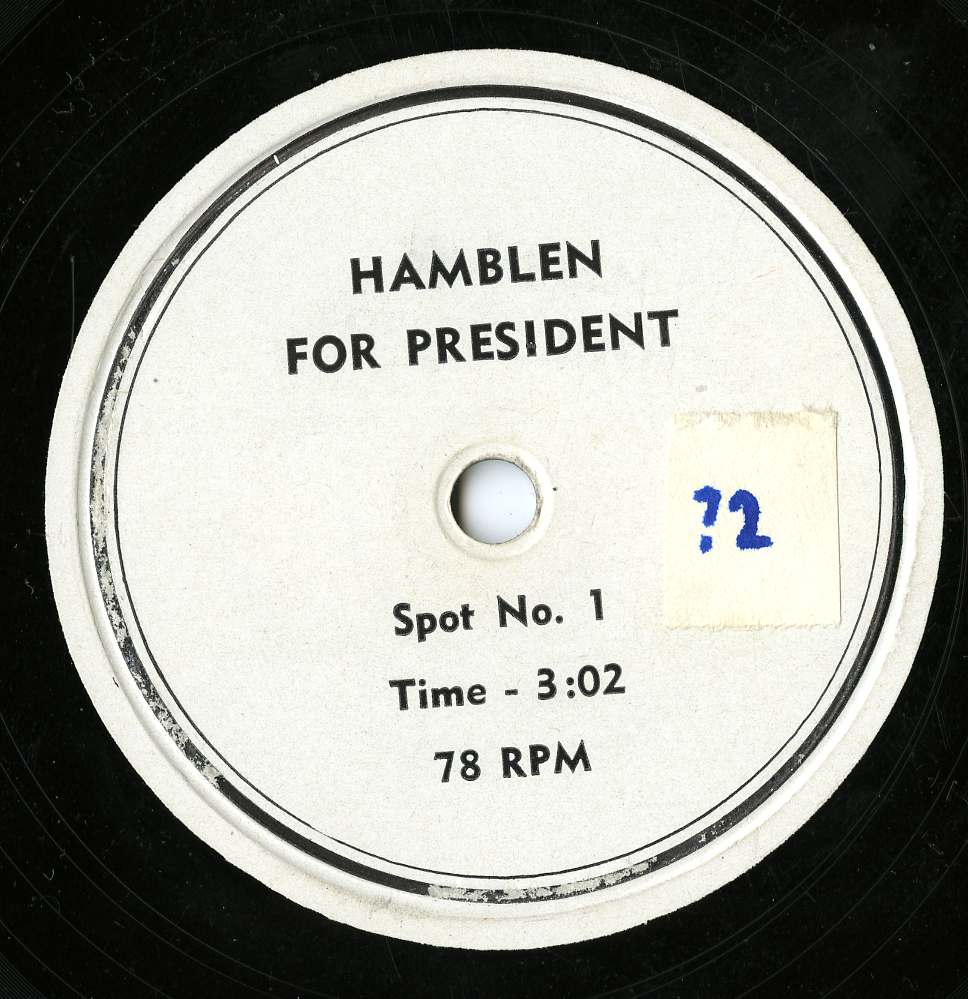
Stuart Hamblen is known today as a singing cowboy who produced radio programs such as “Covered Wagon Jubilee” and eventually “Cowboy Church of the Air.” He was also a major songwriter and recording star—one of the first C&W artists to record for Decca.
A Texas native, Hamblen moved to Los Angeles in the 1920s to start a career in radio. After a brief stint performing with the Beverly Hillbillies, he began hosting his own show. He also began making headlines for his drinking, gambling, and debt-related lawsuits, as well as for owning and training hunting dogs and racehorses. (Incidentally, he was the first person to send a horse to a race on an airplane–Flying Tiger was the name of the airline).
In 1938, Hamblen became one of a series of C&W celebrity-politicians when he ran as a Democrat for congressman of L.A.’s 11th district. (Other examples included W. Lee O’Daniel who served as governor of Texas, Jimmy Davis who served as governor of Louisiana, and Roy Acuff who ran for governor of Tennessee). Hamblen’s candidacy apparently disturbed many Democrats from his district, largely because he campaigned in character, incorporating his guitar and cowboy persona. One Los Angeles Times article referred to him as the “Bourbon candidate for Congress.” Not surprisingly, he did not win.
A decade later, in 1949, Hamblen attended one of evangelist Billy Graham’s tent meetings in Los Angeles—the meeting inspired him to quit drinking and to devote his life to the Christian faith. When his radio station KMTR subsequently asked him to promote a beer brand on air, he refused and lost his show. The beer ad incident put Hamblen on the radar of the Prohibition Party; after General Douglas MacArthur refused the invitation to run as the 1952 Prohibition presidential candidate, Hamblen was recruited for the role. With a retired professor (Enoch A. Holtwick) as a running mate, Hamblen came in 4th place, with 73,412 popular votes.
At the Prohibition Party’s convention, Hamblen played his hit song “It Is No Secret (What God Can Do),” treating it as the theme song of the campaign. At some point during 1951-1952, he used the song as well in a 78rpm recording (likely intended for radio play), entitled “Hamblen for President.” On each side, Hamblen explains his platform and emphasizes that prohibition would not be reinstated if he were elected. A few excerpts from both sides are below.
Hamblen for President, Spot 1
Hamblen for President, Spot 2, beginning
Hamblen for President, Spot 2, middle
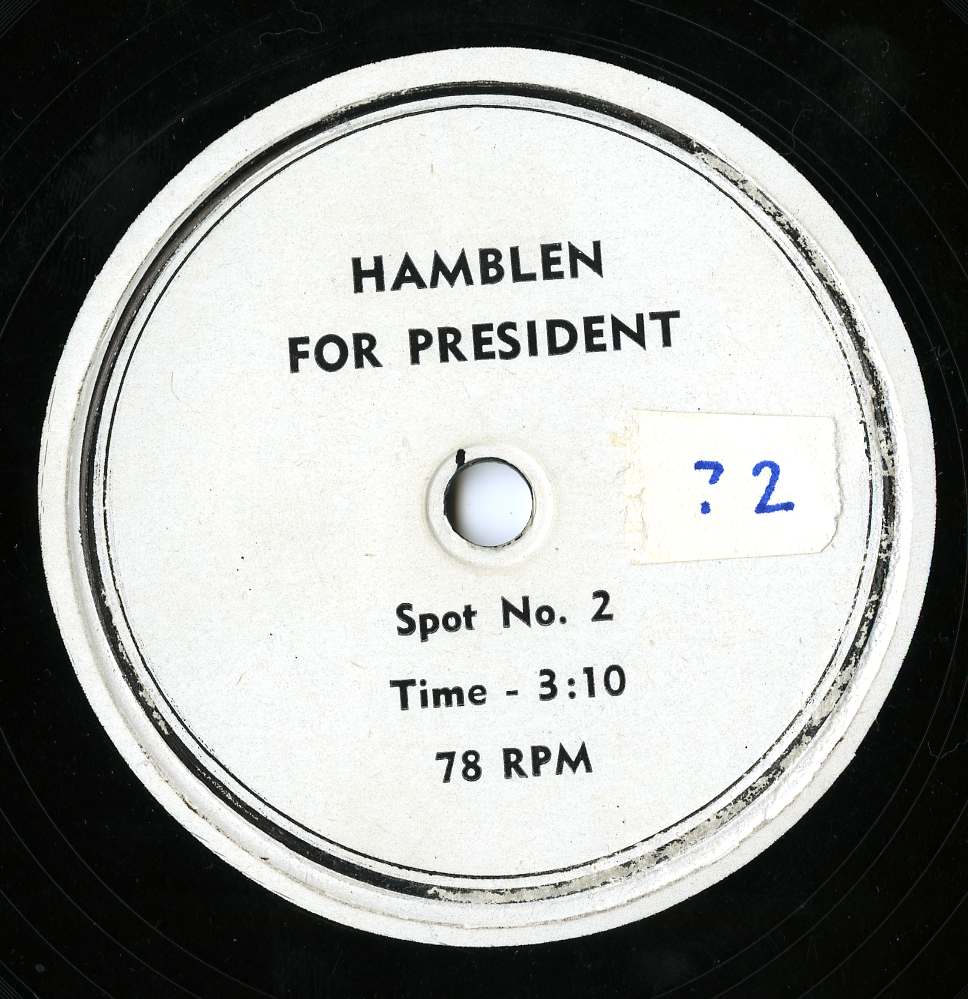
The recording is cataloged and available at the Southern Folklife Collection as 78-17711, along with many of Hamblen’s commercial recordings and reel-to-reel tapes of his radio show “Cowboy Church of the Air.”
Graphic design of the Old Time Fiddlers' Convention at Union Grove
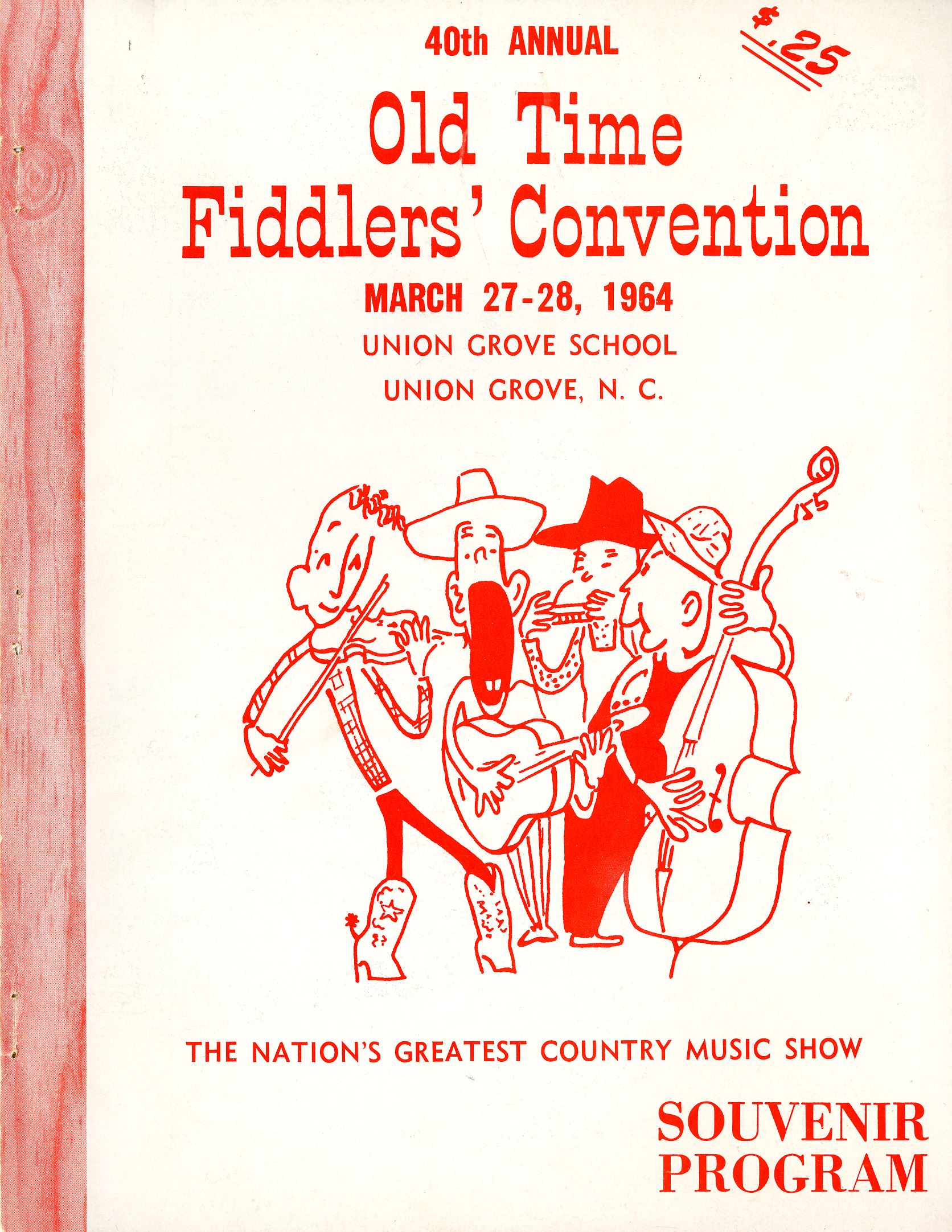
Grateful for the opportunity to research in the Fiddlers’ Grove Collection (20016) this week, my eyes were drawn to the iconic graphic design of the 1960s era souvenir programs in Folder 69 of the collection. Especially ripe for analysis is the advertisement for the Davie Electric Membership Corp, “Serving 9000 in six counties,” including North Iredell. That electrical plug really knows how to swing on that banjo.
The 1964 program also included a list of the the performers from 1963, including Bascombe Lunsford, the Mountain Ramblers from Galax, Jim Craver, The Blue Sky Boys, J. E. Mainer, Grandma Pearly Davis, and more. See the full line up below. The 2015 festival is coming up May 22-24 in Union Grove, NC. For more information about the Old Time Fiddlers’ Convention and Fiddlers’ Grove Campground, visit the Southern Folklife Collection at the 4th floor reading room in The Wilson Library.
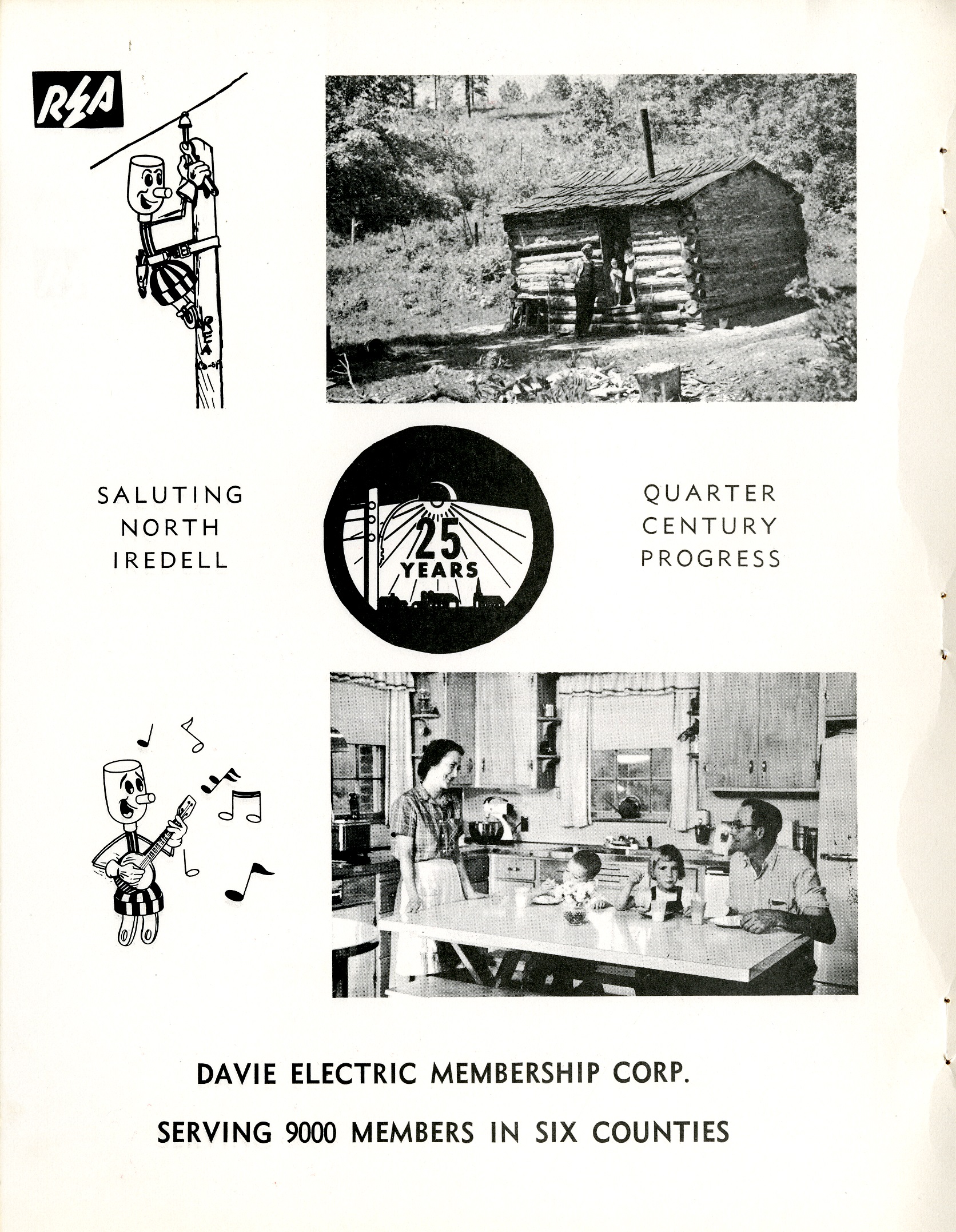



Cabin fever Friday at the Southern Folklife Collection

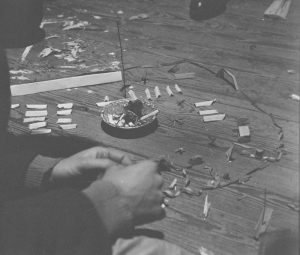 It’s not Boston, but here in North Carolina we’ve had an unexpected, late winter, one-two punch the past couple of weeks with ice and snow. The amount of school and work that has been cancelled has certainly fueled some cabin fever creativity in our own households, but not sure if anyone has gone so far as Paul Clayton, Bob Brill, Dave van Ronk, Lee Hoffman, and their friends did at this party in New York circa 1959. We’re really not sure what’s going in these images–a game, a collaborative sculpture, a ceremonial practice, building a diorama? Let us know if you have any ideas. All images in this post were photographed by Ray Sullivan, a partner in Photo-Sound Associates along with photographer Aaron Rennert and sound-recordist Joel Katz, a team dedicated to documenting the folk scene in New York City in the late 1950s and early 1960s. Over 4000 images from the Photo-Sound Associates have been digitized and can be viewed through Ron Cohen Collection (20239) finding aid via the Southern Folklife Collection.
It’s not Boston, but here in North Carolina we’ve had an unexpected, late winter, one-two punch the past couple of weeks with ice and snow. The amount of school and work that has been cancelled has certainly fueled some cabin fever creativity in our own households, but not sure if anyone has gone so far as Paul Clayton, Bob Brill, Dave van Ronk, Lee Hoffman, and their friends did at this party in New York circa 1959. We’re really not sure what’s going in these images–a game, a collaborative sculpture, a ceremonial practice, building a diorama? Let us know if you have any ideas. All images in this post were photographed by Ray Sullivan, a partner in Photo-Sound Associates along with photographer Aaron Rennert and sound-recordist Joel Katz, a team dedicated to documenting the folk scene in New York City in the late 1950s and early 1960s. Over 4000 images from the Photo-Sound Associates have been digitized and can be viewed through Ron Cohen Collection (20239) finding aid via the Southern Folklife Collection.
 No matter what’s going on, it looks pretty fun. And Bob Brill is providing musical accompaniment on the kazumpet while Dave van Ronk and Paul Clayton harmonize accompaniment. We hope you had at least as much fun during your last “weather event.” Looking forward to Spring!
No matter what’s going on, it looks pretty fun. And Bob Brill is providing musical accompaniment on the kazumpet while Dave van Ronk and Paul Clayton harmonize accompaniment. We hope you had at least as much fun during your last “weather event.” Looking forward to Spring!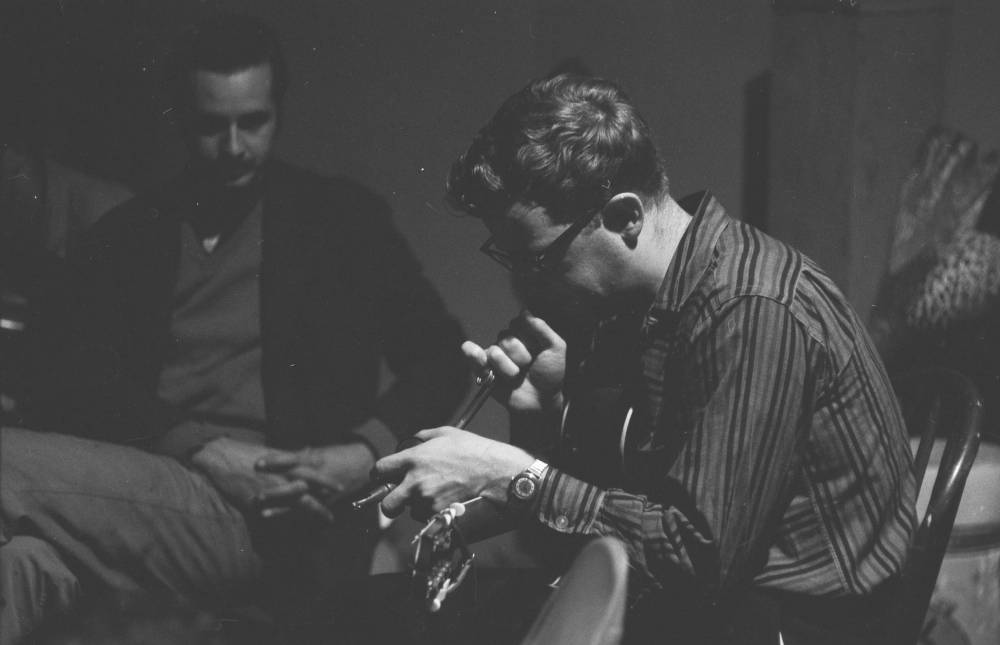

Songs from Limestone Country
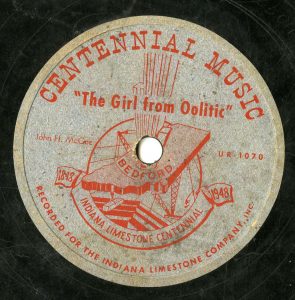
We came across an interesting bit of American industrial history in a recent 78rpm cataloging session in the Southern Folklife Collection: a circa 1948 record promoting the Indiana Limestone Company, featuring on its label a relatively complex illustration of the limestone mining process. Celebrating the 100th anniversary of Indiana’s limestone industry, it includes two songs honoring the state’s favorite sedimentary rock : “Old Limestone Quarry” and “Girl from Oolitic.” (Oolitic is a town in Indiana known for its oolite, a kind of limestone).
We cannot find any information on this release, except that John H. McGee applied for copyright for the two songs in 1949.
We’ve included an excerpt from Side A here, which features an unknown vocalist and big band:
“Old Limestone Quarry”
The record is available at the SFC as call no. 78-17816.
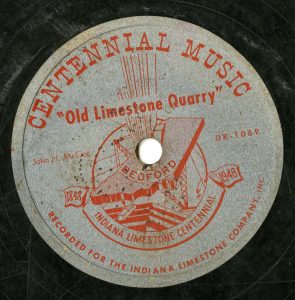
Music Biographer Barry Mazor and Musician Dom Flemons at Wilson Library Feb. 6
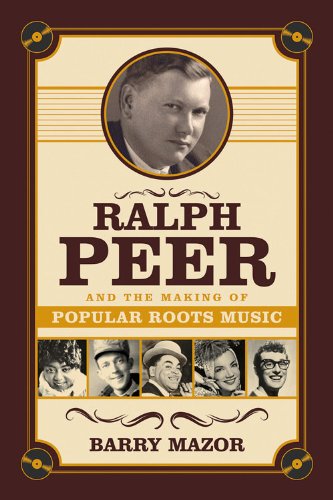
Ralph Peer and the Making of Popular Roots Music
Friday, Feb. 6, 2015
Wilson Special Collections Library
Pleasants Family Assembly Room
5:30 p.m. Reception (program will begin at 6 p.m.)
6 p.m. Book Talk by Barry Mazor
7 p.m. Concert by Dom Flemons
Free and open to the public
Information: Liza Terll, Friends of the Library,
(919) 548-1203
Music scout, record producer, and industry visionary Ralph Peer helped shape and popularize American country and roots music from the 1920s through the ’40s. On Feb. 6, at 6 p.m., a new biography of Peer will be the topic of a talk by the author, Barry Mazor, at UNC’s Wilson Special Collections Library. A concert by musician Dom Flemons will follow at 7 p.m.
The Southern Folklife Collection (SFC) in Wilson Library is the program sponsor. Mazor and Flemons have both conducted extensive research in the Collection and are friends with one another, said SFC curator Steve Weiss.
Ralph Peer and the Making of Popular Roots Music was released in November to critical acclaim. The New York Times called it “a beautifully written portrait of an utterly fascinating man. One is continually astonished at how a shipping clerk from Independence, Mo., at various junctions in his life, made decisions that transformed American music by bringing new artists and forms of music — from country, blues and bluegrass to early rock ‘n’ roll — to millions of citizens who had not yet encountered them.”
Peer’s accomplishments include sparking the blues craze by recording Mamie Smith’s “Crazy Blues;” discovering the Carter Family and Jimmie Rodgers; and helping transform popular music well through the postwar years.
In the stacks of the SFC, Mazor — a winner of the 2008 Charlie Lamb Award for Excellence in Country Music Journalism — was able to draw on a unique recorded interview with Ralph Peer, as well as correspondence between Peer and musician Sara Carter of The Carter Family, found in the SFC’s Ed Kahn Collection. Those letters will be on display at the event.
 Flemons, too, has deep ties to the SFC. In 2012, the Grammy-winning banjo player and former member of the Carolina Chocolate Drops described in an interview how video recordings and interviews in the Collection have informed his work. “There is something that a visual artifact can do that is greater than a mere recording,” he said. “You get to see the player and performer in the flesh and see how they played the music.”
Flemons, too, has deep ties to the SFC. In 2012, the Grammy-winning banjo player and former member of the Carolina Chocolate Drops described in an interview how video recordings and interviews in the Collection have informed his work. “There is something that a visual artifact can do that is greater than a mere recording,” he said. “You get to see the player and performer in the flesh and see how they played the music.”
The Dom Flemons Papers, 2004-2009, are part of the Southern Folklife Collection, and consist of audio and video recordings, photographs, programs, and related materials that Flemons has donated. Approximately 200 photographs from the collection, including publicity stills of the Carolina Chocolate Drops, may be viewed online, via the UNC Library’s Carolina Digital Repository.
An Alphabet of Treasures: Special Collections from A to Z
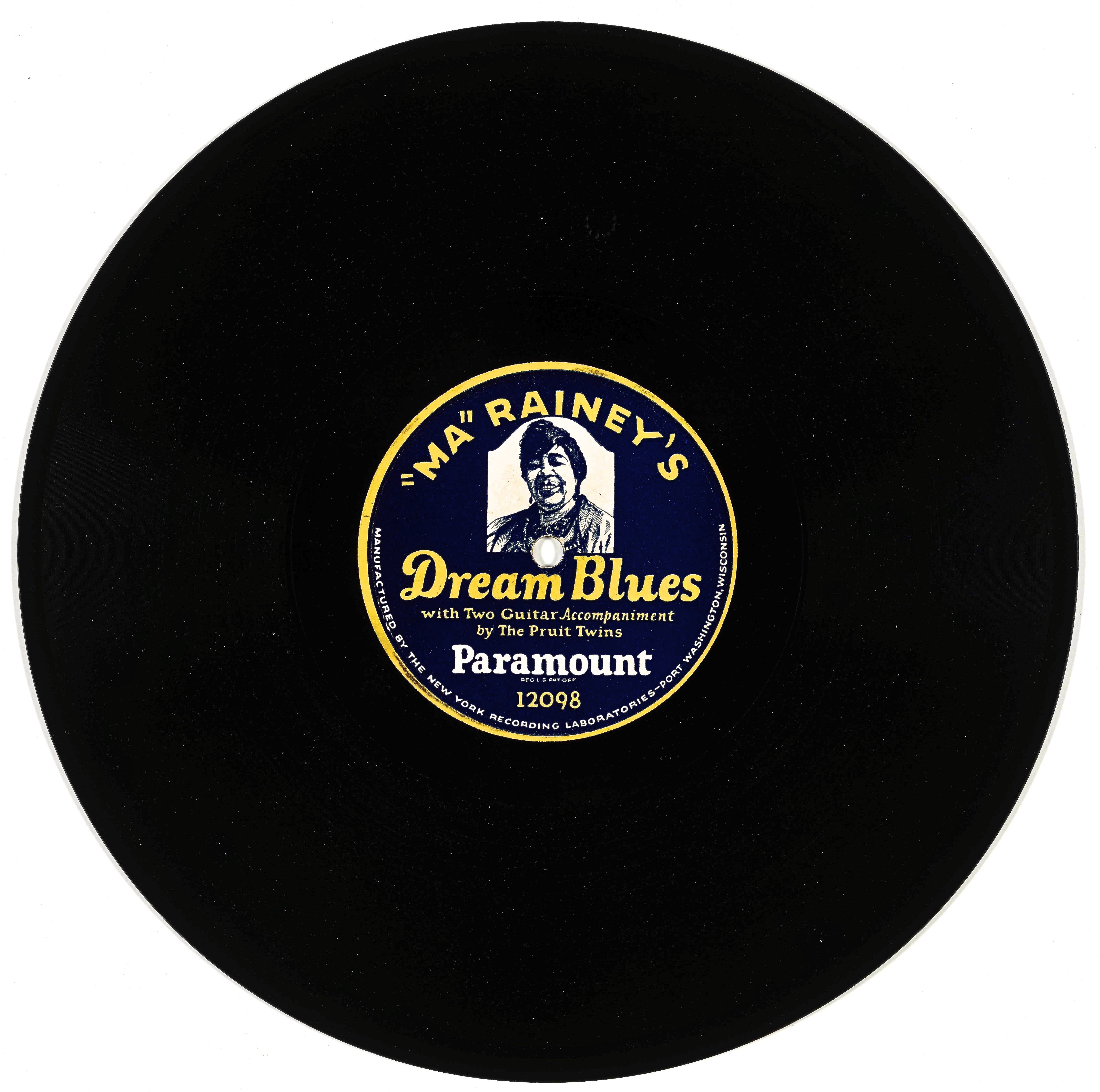 [if you like zooming in on record labels you should click on this photo]
[if you like zooming in on record labels you should click on this photo]
Dream Blues,” 78 rpm disc, 1924
Gertrude “Ma” Rainey with The Pruitt Twins, Paramount Records
As Paramount’s best-selling artist of the early 1920s, vaudeville superstar and “The Mother of the Blues” Gertrude “Ma” Rainey was honored with her own “portrait label” disc, the first of its kind, marketed and sold as a special souvenir for her fans. Rainey is accompanied on these March 1924 recordings by the remarkable Pruitt Twins, Miles and Milas of Kansas City, on banjo and guitar. The disc above is call number 78-11104 from the John Edwards Memorial Collection (20001).
This item is one of many highlights pulled from across the collections in Wilson library currently featured in the exhibition An Alphabet of Treasures: Special Collections from A to Z, which can be seen in Wilson Special Collections Library until April 19, 2015.
Follow the Wilson Library tumblr for more highlights from the exhibit.
And remember to mark your calendars for our very special event with music biographer Barry Mazor and musician Dom Flemons coming up next week.
Ralph Peer and the Making of Popular Roots Music
Friday, Feb. 6, 2015
Wilson Special Collections Library
Pleasants Family Assembly Room
5:30 p.m. Reception (program will begin at 6 p.m.)
6 p.m. Book Talk by Barry Mazor
7 p.m. Concert by Dom Flemons
Free and open to the public
Information: Liza Terll, Friends of the Library, (919) 548-1203
Music scout, record producer, and industry visionary Ralph Peer helped shape and popularize American country and roots music from the 1920s through the ’40s. On Feb. 6, at 6 p.m., a new biography of Peer will be the topic of a talk by the author, Barry Mazor, at UNC’s Wilson Special Collections Library. A concert by musician Dom Flemons will follow at 7 p.m. We’ll have more about the program on Field Trip South tomorrow.
The "5" Royales inducted into the Rock and Roll Hall of Fame
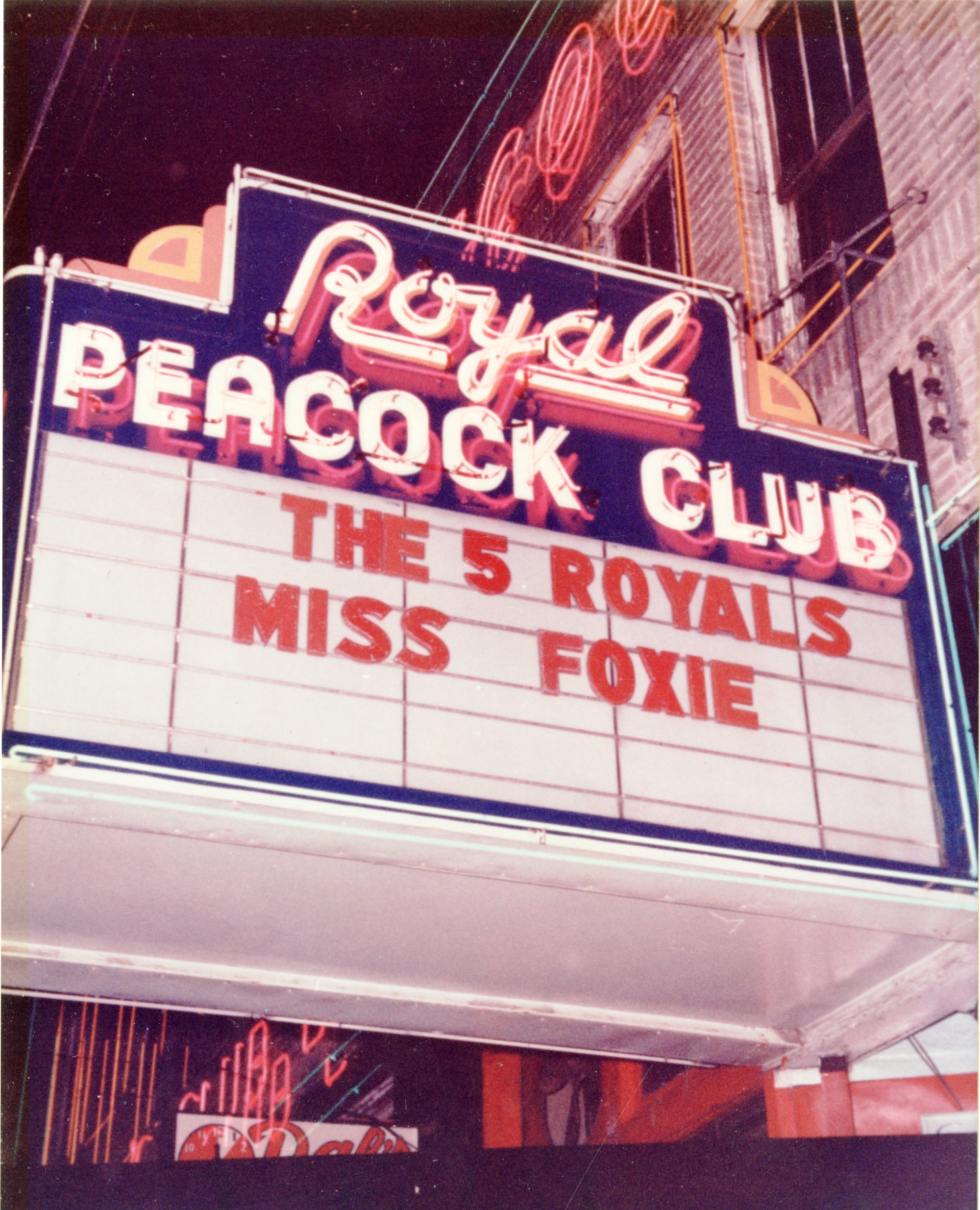 Excellent and exciting news this week that the “5” Royales are to be inducted into the Rock and Roll Hall of Fame in the “early influences” category. Many have supported their nominations in the past, the “5” Royales were recipients of the North Carolina Folk Heritage Award in 1992, but we were glad to see the band from Winston-Salem, NC recognized internationally for their significant contributions to American music. As the repository for the J. Taylor Doggett Collection (20286), the Southern Folklife Collection holds a variety of materials documenting the “5” Royales career and music.
Excellent and exciting news this week that the “5” Royales are to be inducted into the Rock and Roll Hall of Fame in the “early influences” category. Many have supported their nominations in the past, the “5” Royales were recipients of the North Carolina Folk Heritage Award in 1992, but we were glad to see the band from Winston-Salem, NC recognized internationally for their significant contributions to American music. As the repository for the J. Taylor Doggett Collection (20286), the Southern Folklife Collection holds a variety of materials documenting the “5” Royales career and music. 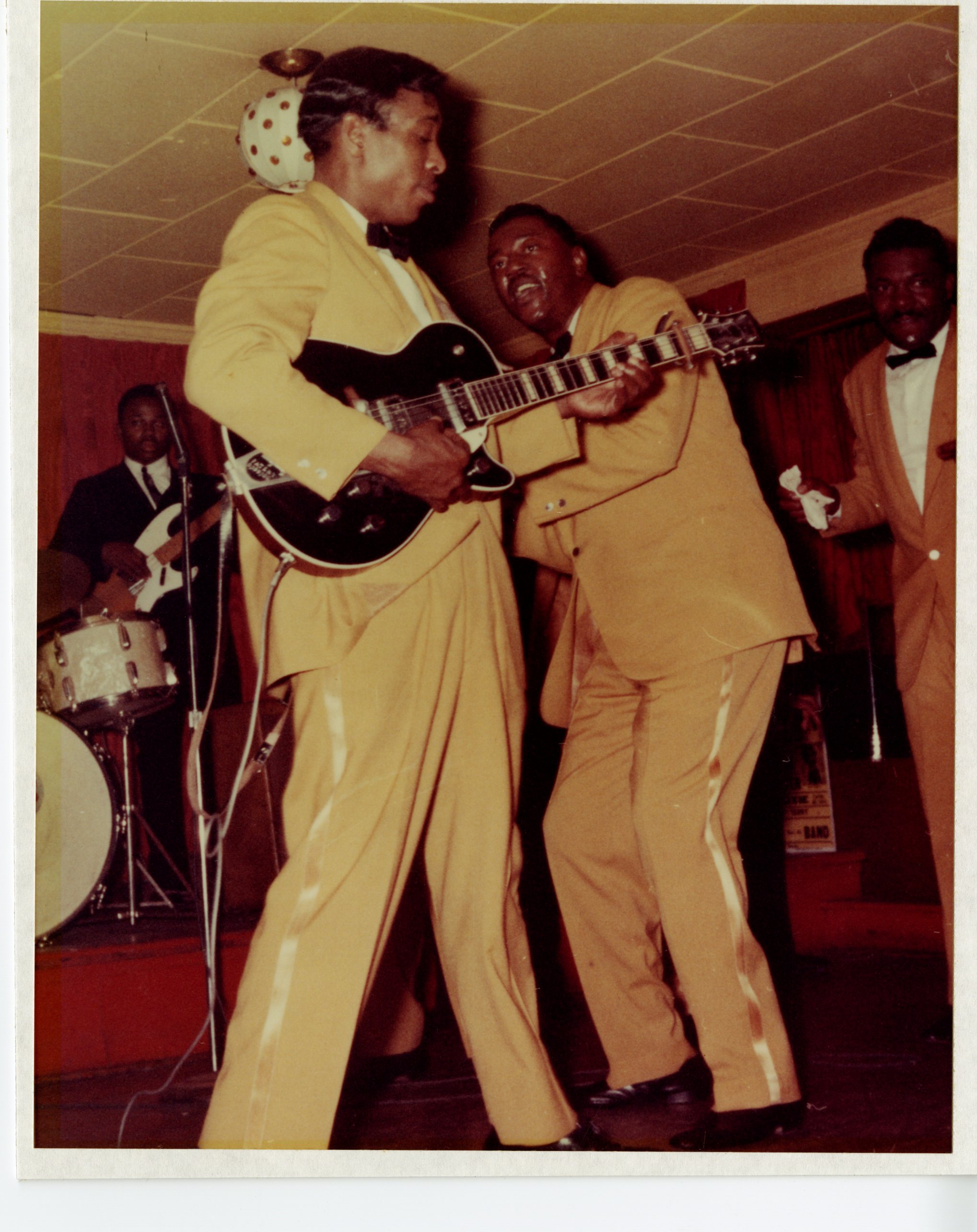 The “5” Royales series documents Doggett’s extensive research and collecting efforts relating to the careers of constituent members Lowman Pauling, Clarence Paul, Curtis Pauling, Obadiah Carter, Johnny Tanner, Eugene Tanner, Otto Jeffries, and William Samuels. There is also music of the Royal Sons, EL Pauling and the Royalton, and the Charlie “Little Jazz” Ferguson Orchestra. The “5” Royales were significant in providing a link between early R&B and early soul in their combination of doo wop, jump blues, and gospel styles influencing a number of R&B musicians, including Ray Charles, James Brown, and Ike and Tina Turner. Guitarist and songwriter, Lowman Pauling, who unfortunately died in 1973, remains one of the greatest unsung innovators in rock and roll. Over the past few years, a number of box sets chronicling the group’s career, as well as tribute albums by well known musicians like Steve Cropper and young North Carolina groups like Chapel Hill’s The Flesh Wounds have been released, exposing new audiences to the band’s unique sound.
The “5” Royales series documents Doggett’s extensive research and collecting efforts relating to the careers of constituent members Lowman Pauling, Clarence Paul, Curtis Pauling, Obadiah Carter, Johnny Tanner, Eugene Tanner, Otto Jeffries, and William Samuels. There is also music of the Royal Sons, EL Pauling and the Royalton, and the Charlie “Little Jazz” Ferguson Orchestra. The “5” Royales were significant in providing a link between early R&B and early soul in their combination of doo wop, jump blues, and gospel styles influencing a number of R&B musicians, including Ray Charles, James Brown, and Ike and Tina Turner. Guitarist and songwriter, Lowman Pauling, who unfortunately died in 1973, remains one of the greatest unsung innovators in rock and roll. Over the past few years, a number of box sets chronicling the group’s career, as well as tribute albums by well known musicians like Steve Cropper and young North Carolina groups like Chapel Hill’s The Flesh Wounds have been released, exposing new audiences to the band’s unique sound.
The J. Taylor Doggett Collection includes a number of important recordings, photographs, and ephemera of the group, but a few items that I am constantly drawn to are a series of cassettes compiled by Doggett, SFC call numbers FS9139 through FS9146, that document the bands lesser heard tunes and side projects.  Besides these remarkable tapes, we love the photographs of the “5” Royales at the Royal Peacock Club (see the sign pictured above and images below ). These images put the viewer almost onstage at what must have been a true rock and roll experience. Congratulations to the “5” Royales and many thanks to J. Taylor Doggett and so many others who dedicated themselves to preserving the legacy of one of North Carolina’s musical treasures.
Besides these remarkable tapes, we love the photographs of the “5” Royales at the Royal Peacock Club (see the sign pictured above and images below ). These images put the viewer almost onstage at what must have been a true rock and roll experience. Congratulations to the “5” Royales and many thanks to J. Taylor Doggett and so many others who dedicated themselves to preserving the legacy of one of North Carolina’s musical treasures. 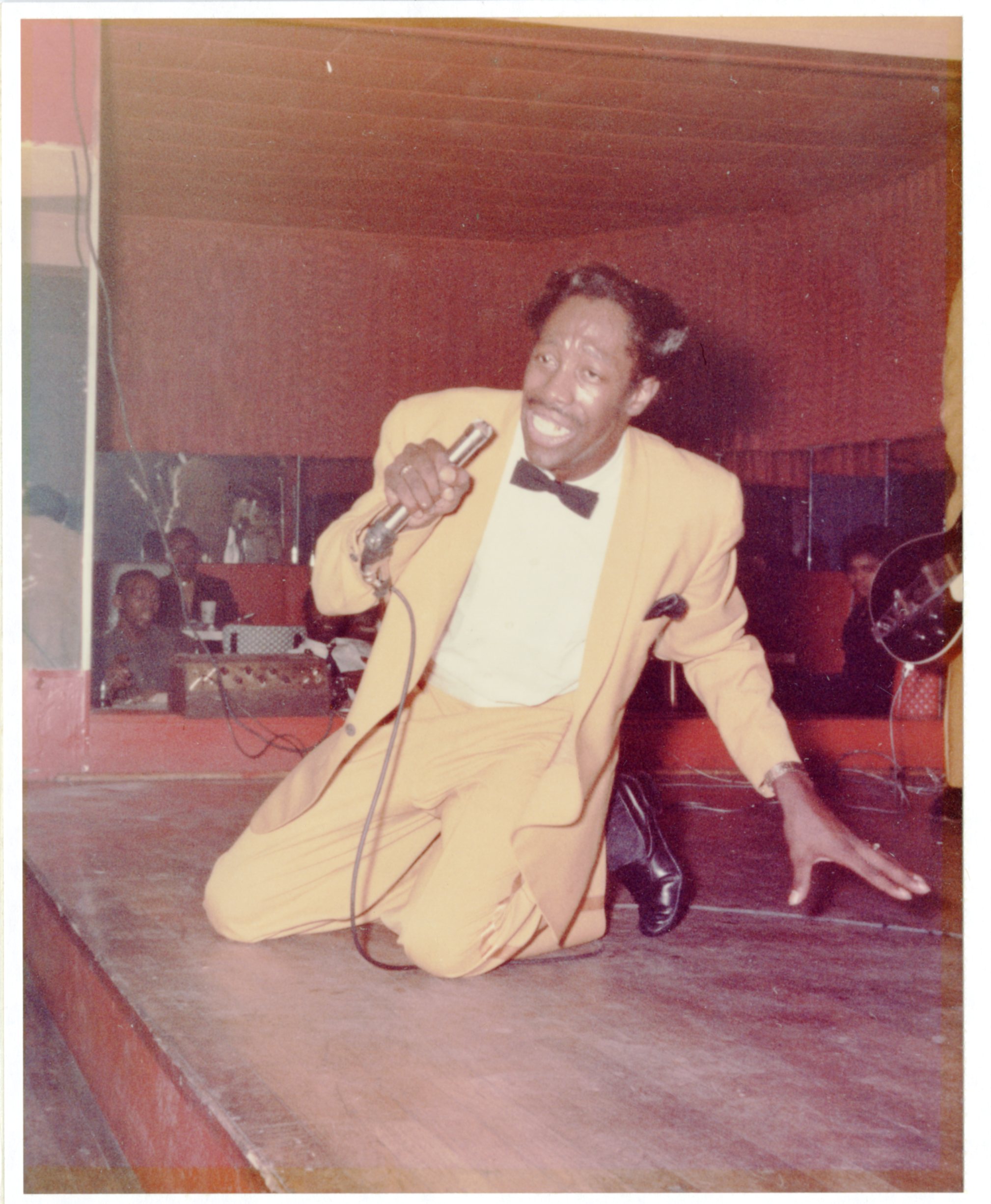
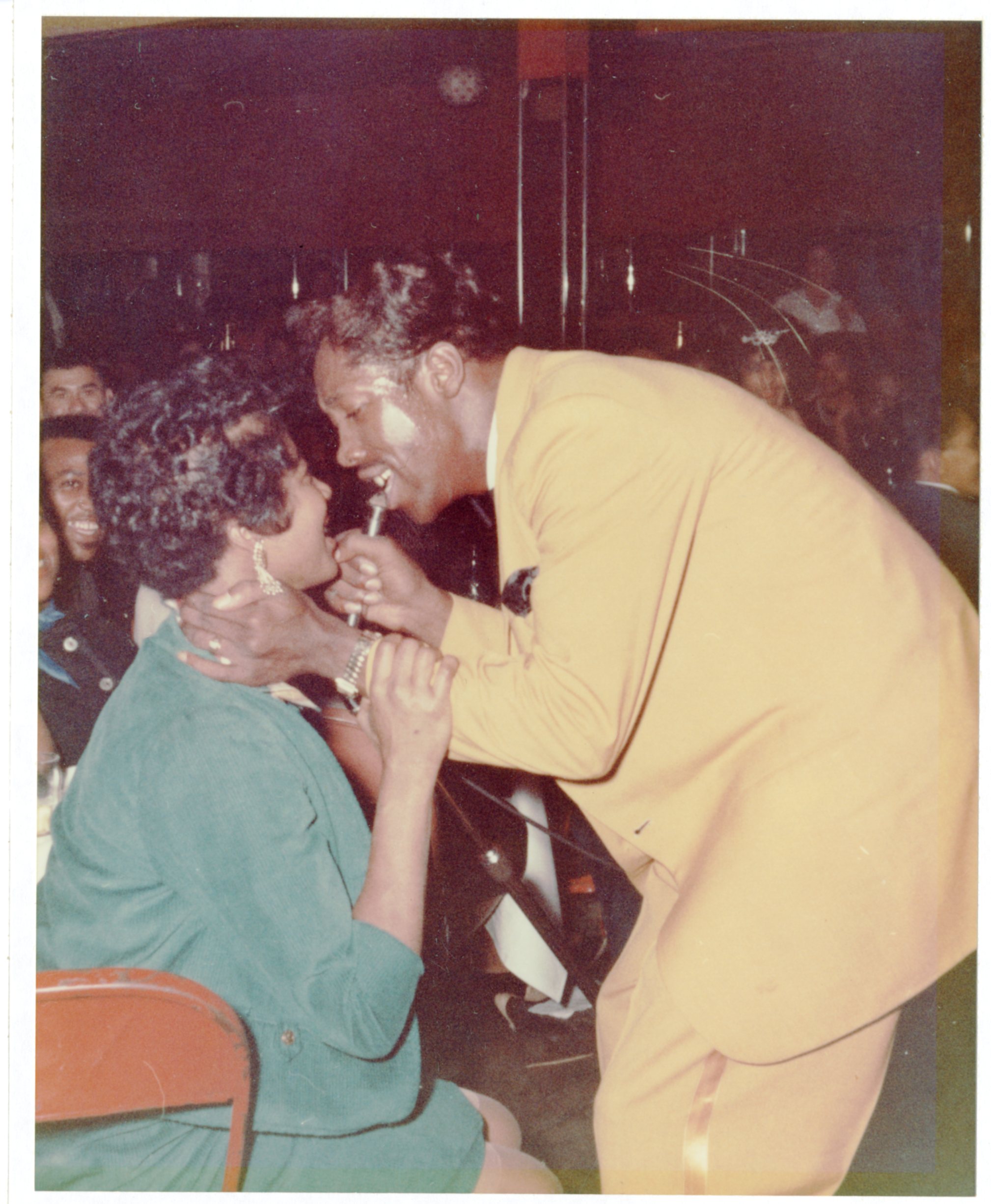
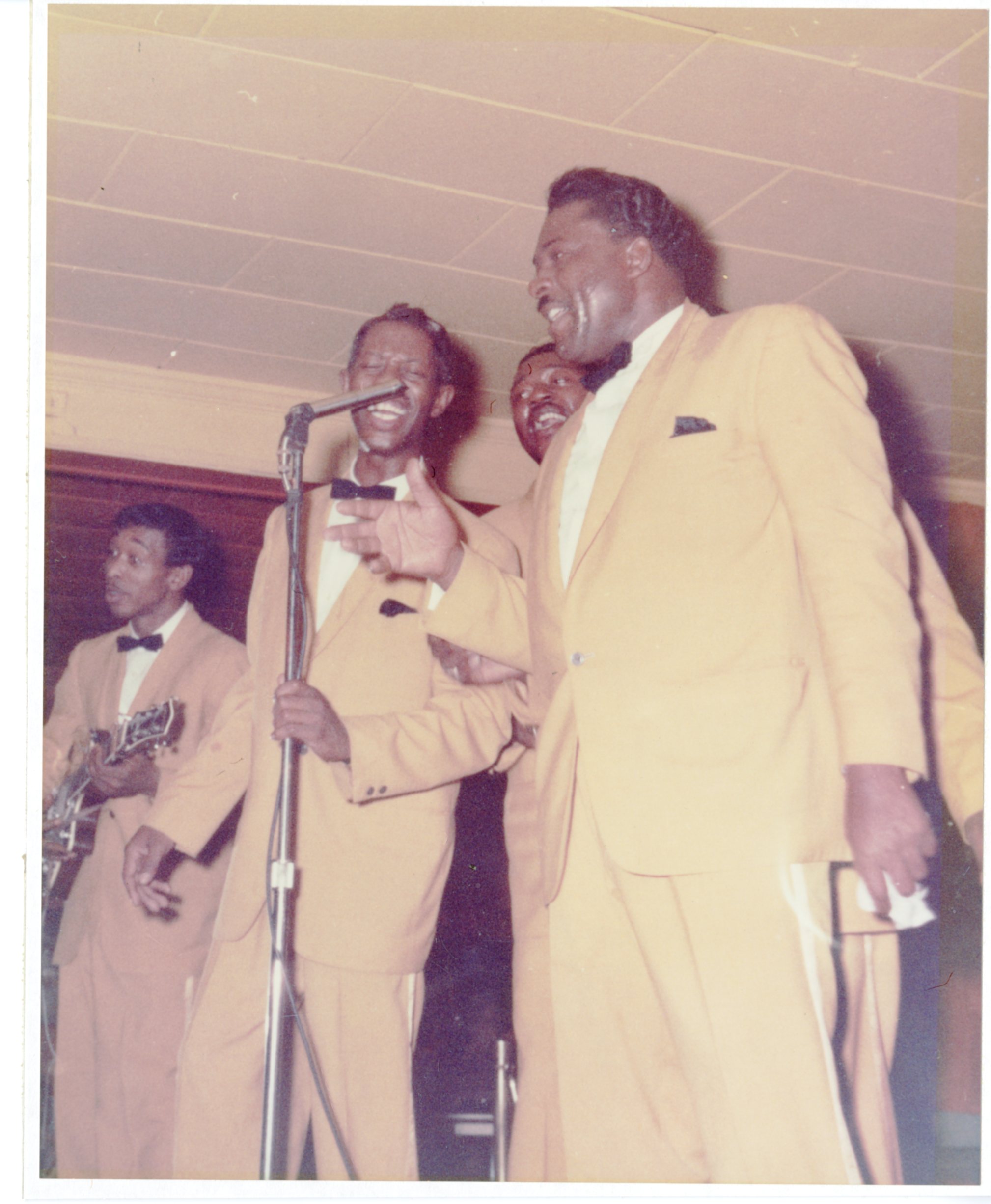
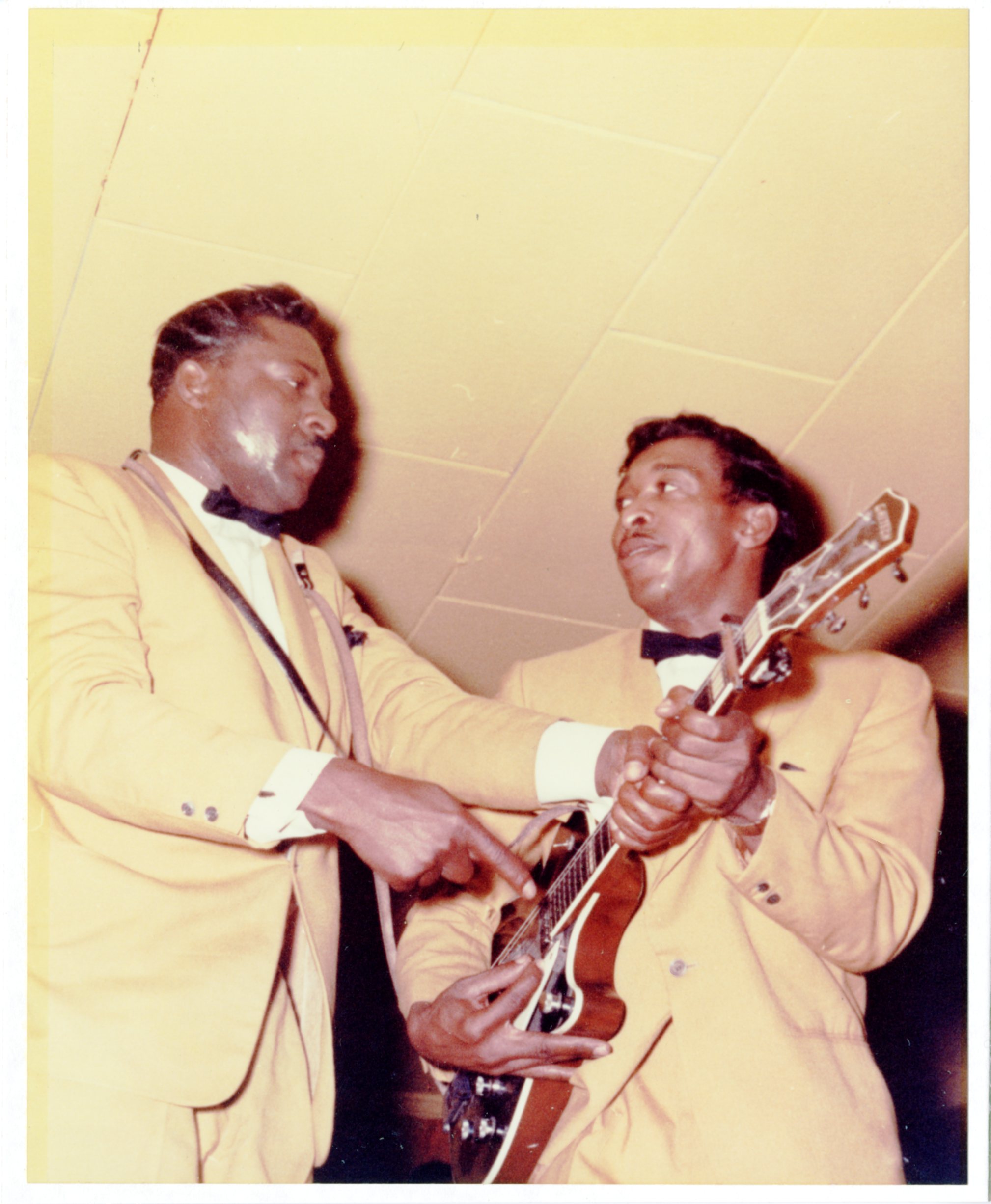
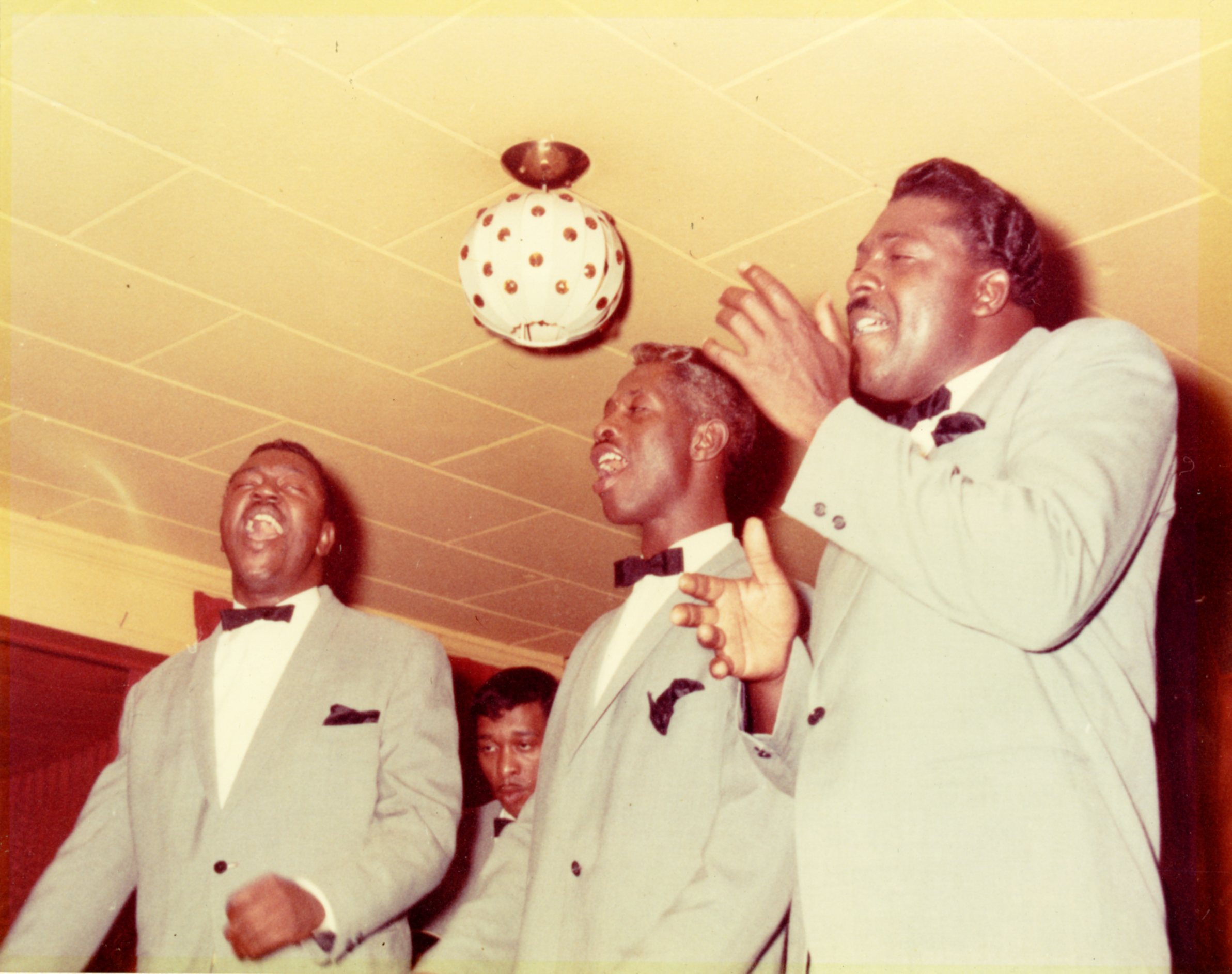

It don't matter who's in Austin, Bob Wills is Still the King (or is it Clifton Chenier)?
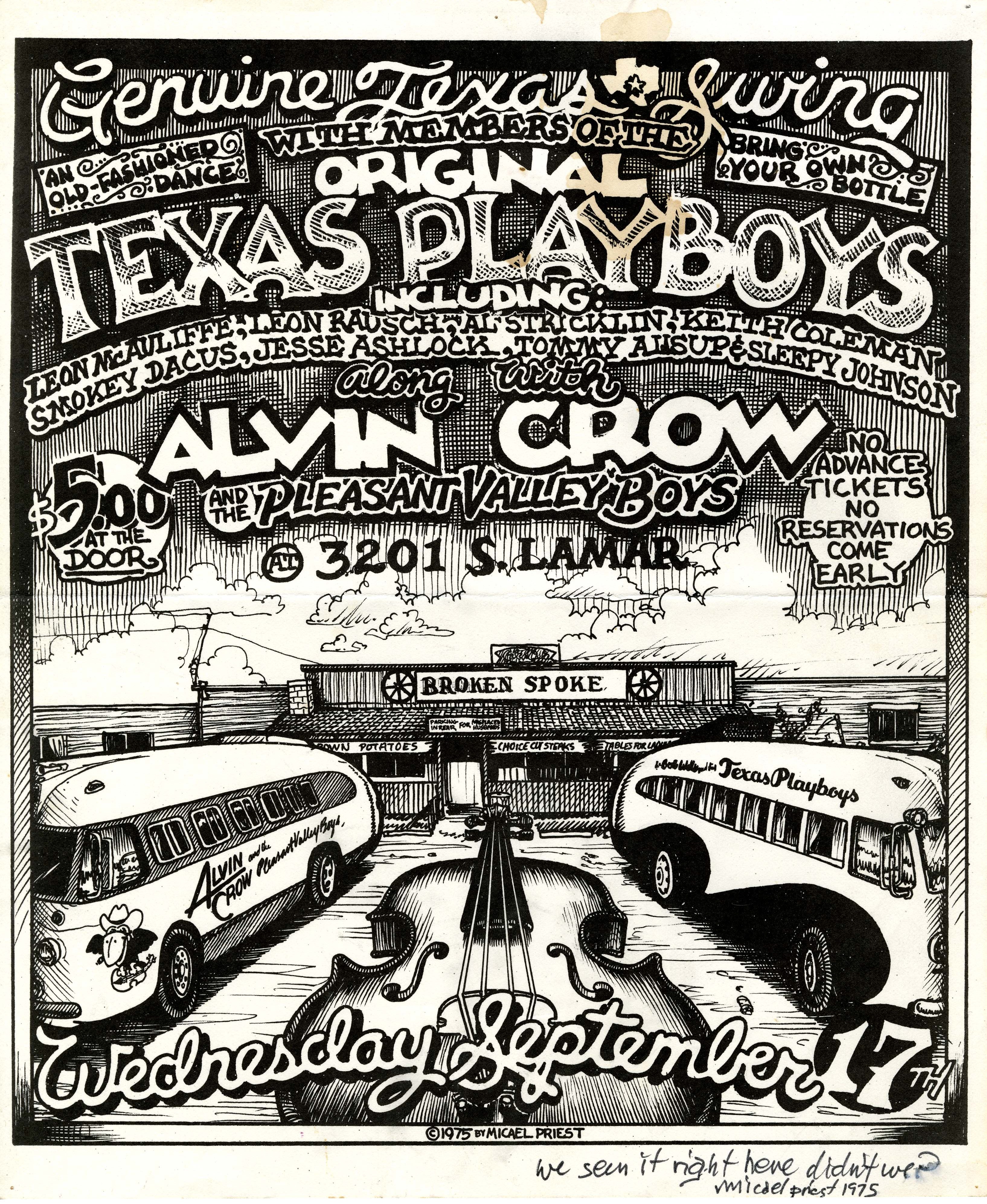 A couple of posters from gigs I would have liked to attend. I was lucky to grow up not 1/2 mile from the Broken Spoke, and despite the best efforts of “New Austin,” I am very glad to report that it’s still there, still honky-tonkin, and the Lone Star is still cold. Both of these posters come from the Archie Green Papers (20002), collected by Archie while a professor at the University of Texas in the 1970s. I feel like artist Michael Priest’s comment written on the bottom of the poster reflects the general sense of wonder those cosmic cowboys and post-hippy hipsters must have felt to be able to attend shows like this on a regular basis, singular moments in music history that transcended the commercial drive of the social scene.
A couple of posters from gigs I would have liked to attend. I was lucky to grow up not 1/2 mile from the Broken Spoke, and despite the best efforts of “New Austin,” I am very glad to report that it’s still there, still honky-tonkin, and the Lone Star is still cold. Both of these posters come from the Archie Green Papers (20002), collected by Archie while a professor at the University of Texas in the 1970s. I feel like artist Michael Priest’s comment written on the bottom of the poster reflects the general sense of wonder those cosmic cowboys and post-hippy hipsters must have felt to be able to attend shows like this on a regular basis, singular moments in music history that transcended the commercial drive of the social scene.
“We seen it right here didn’t we?”
I wish we had, Michael. Long live the kings. 